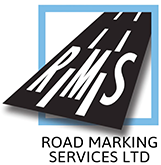 Add My Company
Add My Company
Sign In

There are many situations where a slip-resistant, yet attractive surface is required. Whether it’s for safety purposes or for a decorative yet functional finish, there are two popular methods of attaining your desired result.
Resin bonded surfacing and resin bound surfacing might sound similar, but there are distinct differences between the two, and this can often be confusing! In this article, we’re taking a look at both techniques, including the differences between the two and how each are commonly used for a wide range of applications.
What is resin surfacing?
At its core, resin surfacing relies on aggregates being ‘glued’ to a base layer to achieve a firm, slip-resistant surface. The two techniques used to achieve this differ in method, finish, and their basic properties.
Resin bound surfacing – Stone blend
Resin bound surfaces are created by mixing together aggregates with the resin itself. The completed mixture is then poured onto the base surface, where it is spread and finished with trowels to leave behind a smooth, flat and consistent surface that is water-permeable and slip resistant.
Resin bonded surfacing – Stone top
Also known as the scatter method, resin bonded surfacing is achieved by first applying and spreading a resin mix to the base layer, and then applying the aggregates on top the resin. The scattered aggregates are left to bond with the resin, leaving behind a rougher textured surface that is impermeable to water. Once cured, any loose aggregates which have failed to bond are swept away and removed, to ensure that no loose stones are leftover on the newly finished surface.
Main differences
As you can see from the descriptions above, the main differences between the two techniques come from the method of application, as well as the resulting surface properties.
Resin bound surfacing is water-permeable, while resin bonded surfacing is impermeable. This key difference makes each method suitable for a range of different applications.
The feel and finishes of the two techniques are also different. Where stone blend surfaces are left flat to the touch, stone top surfaces are rougher and more textured. This also influences how each surface should be used.
Uses and applications
Resin bound surfaces: Due to the smoother and permeable nature of stone blend surfaces, they make a fantastic decorative finish for drives, paths and ornamental gardens without requiring any extra drainage solutions.
Tree pit surrounds are laid using this method, but a larger single sized aggregate is mixed to provide greater permeability.
Outdoor sports surfaces, footpaths and cycle paths are also commonly finished with resin bound aggregates, as are areas regularly exposed to large volumes of water, such as pool and pond surrounds.
The uniform finish of resin bound surfaces are ideal if you want to create an attractive yet completely hassle-free surface for an outdoor showroom or plaza area, and the large variety of coloured aggregates available makes it easy to create a finish that suits any tastes, theme or decor. Coloured crushed glass can also be laid for an especially highly decorative finish.
Resin bonded surfaces: The main consideration to make with these surfaces is their impermeability. The high-friction properties created by the rough, textured finish make resin bonded surfaces perfect for driveways and car parks, but runoff and drainage channels should be planned in advance to eliminate flood risk and prevent standing water.
Stone top surfaces offer the look of loose gravel without the associated hassle. Driveways, footpaths and patios can all benefit from this aesthetic, leaving you free from worry over the constant maintenance involved with loose and easily manipulated stone.
The textured finish allows for fantastic traction on the road, creating a safe surface for high traffic roadways, and is commonly used at junctions and on the approach to hazards. Like resin bound surfaces, a huge range of coloured aggregates are available, making it easy to create a distinct surface to suit any number of decorative purposes.
One thing to note with resin bonded surfaces is the possibility for bonded aggregates to come loose over time. Because the aggregates are poured on top of the the resin, and is only bonded on one side, there is a chance for stones to loosen and become more worn with use and age. This makes resin bonded surfaces naturally less durable than resin bound surfaces. Having said that, a stone top surface will still provide many years of service, especially when exposed to foot traffic only – footbridges and footpaths, for instance.
Road Marking Services provide specialised resin surfacing for a range of applications throughout the Yorkshire area and beyond. Our experienced team are able to apply resin bound and resin bonded surfaces to suit your particular needs, from driveways and footpaths to road safety marking, internal flooring, car parks and more. To find out more about our resin road surfacing, don’t hesitate to get in touch with our friendly team today.
For more information on What is the Difference Between Resin Bonded and Resin Bound? talk to Road Marking Services
Enquire Now
List your company on FindTheNeedle.

